Why cAMP produces contraction in heart but relaxation in smooth muscle
by egpat Posted on 05 Aug 2019
Quite interestingly one of the important mediators, cyclic adenosine monophosphate (cAMP) has dual role in our physiological system. It produces contraction of cardiac muscle at the same it produces relaxation in smooth muscle. So let’s see here why it acts differently at these two organs.
How it is activated?
First of all let’s see with which receptors cAMP is associated. It is an important secondary messenger in adrenergic system acting through beta receptors. It increases the contraction of heart by acting through β1 receptors while relaxation in smooth muscle by acting through β2 receptors.
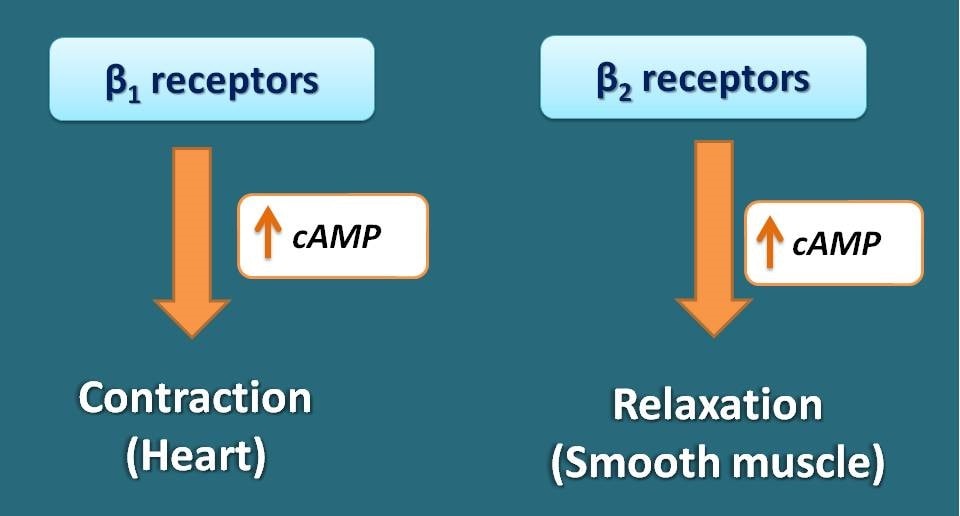
β3 receptors are also coupled with cAMP which are mainly focussed at adipose tissue in increasing lipolyis, beak down of fat.

On the other hand, Muscarinic receptors like M2 and M4 are also associated with cAMP but they inhibit its activation and thereby its action. These receptors are mainly located on heart and CNS respectively.

How it acts?
Now let’s come to the point. How this single mediator, cAMP, can produce quite opposite actions? Is it because of type of adrenergic receptors or type of the mediator acting on these receptors? Undoubtedly they don’t influence its action as both β1 and β2 receptors increase release of cAMP.
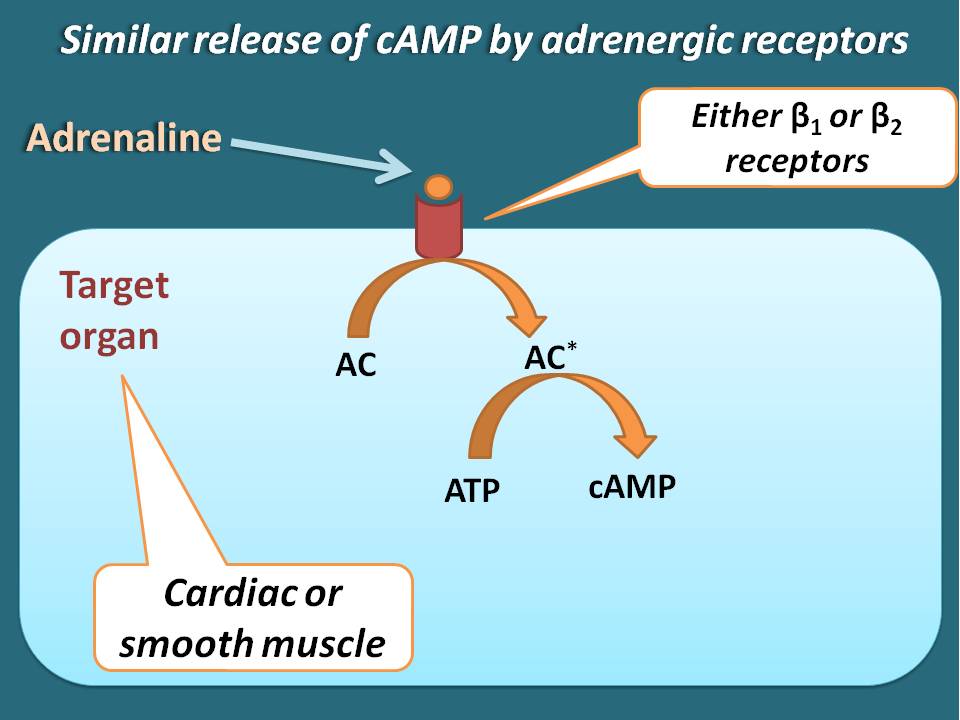
The difference in the action is all due to the difference in contractile mechanism of cardiac and smooth muscle.
Action of cAMP in cardiac muscle
In the cardiac muscle, when the cAMP levels are increased, it stimulates protein kinases which increase the calcium permeability into the cardiac membrane. This increases intracellular calclium levels in the heart which in turn increases force of contraction.
Normally troponin forms a block between actin and myosin filaments controlling the contraction. As calcium levels raise intracellularly, it binds with troponin thereby removes this block. This results in sliding of actin and myosin filaments on each other producing contraction.
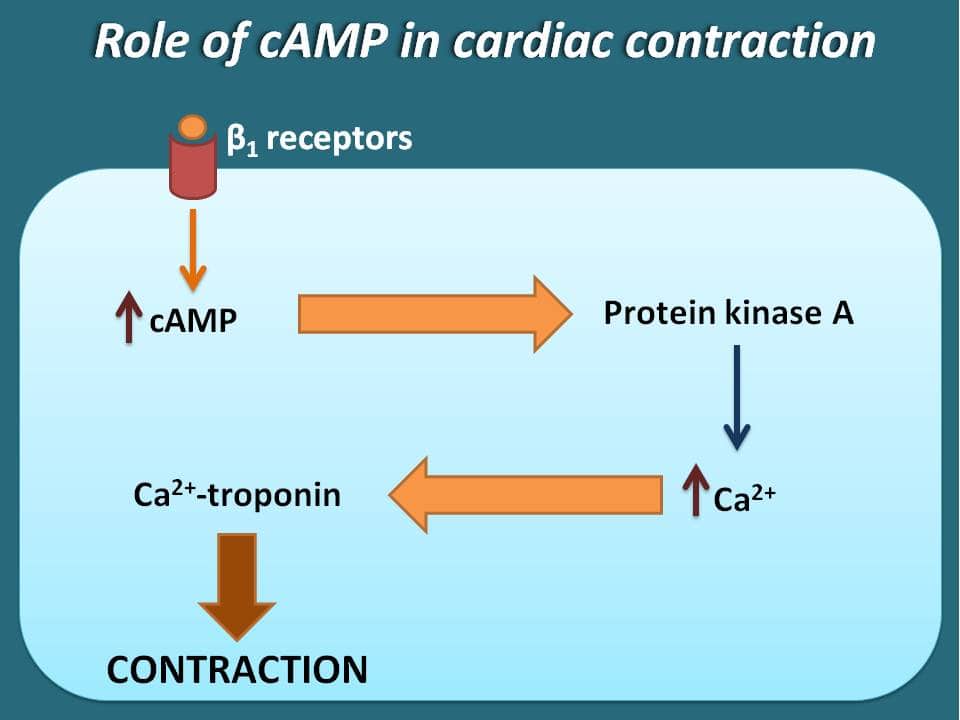
Action of cAMP in smooth muscle
Now in the smooth muscle we can observe a different contractile mechanism. One of the important steps here is the activation of myosin light chain (MLC) which then combine with actin filaments on the muscle to produce contraction.
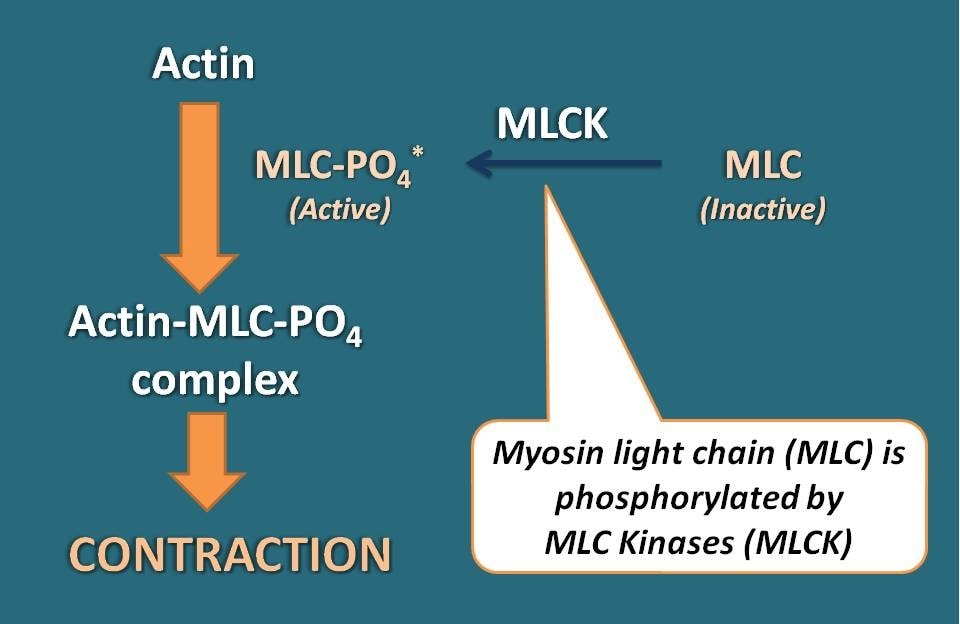
This step requires phsophroylation of MLC which is carried by MLC kinases. But how this MLCK is activated? Here calcium plays an important role. Calcium forms a complex with calmodulin which activates MLCK to bring the phosphorylaion of MLC.
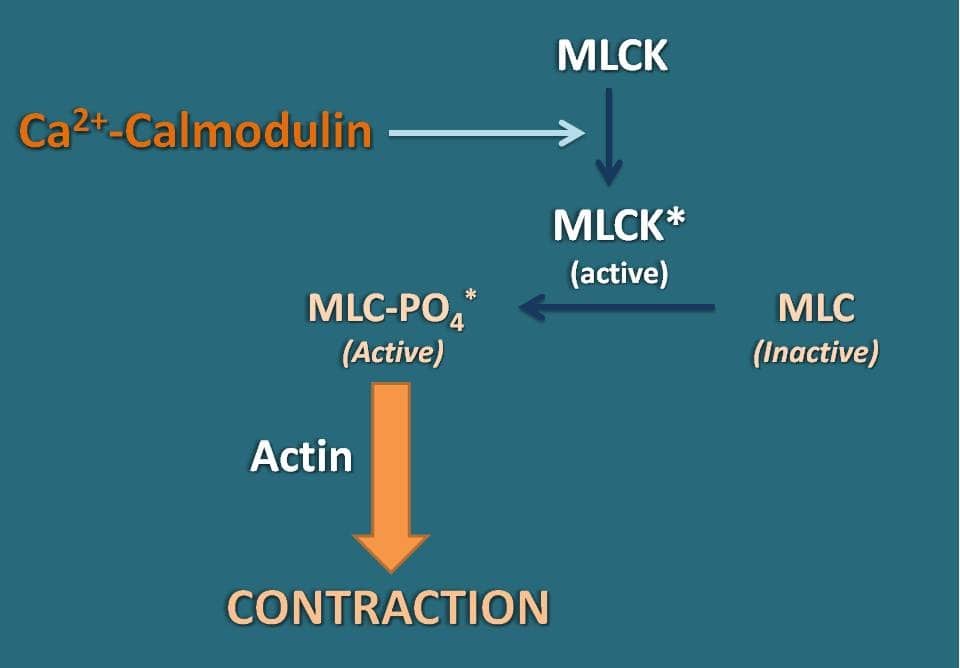
Now let’s see the role of cAMP here. Quite opposite to calcium, it deactivates of myosin light chain kinases (MLCK) instead of activation. When this enzyme is phosphorylated it will be deactivated. cAMP brings phosphorylation of MLCK rendering its inactive.
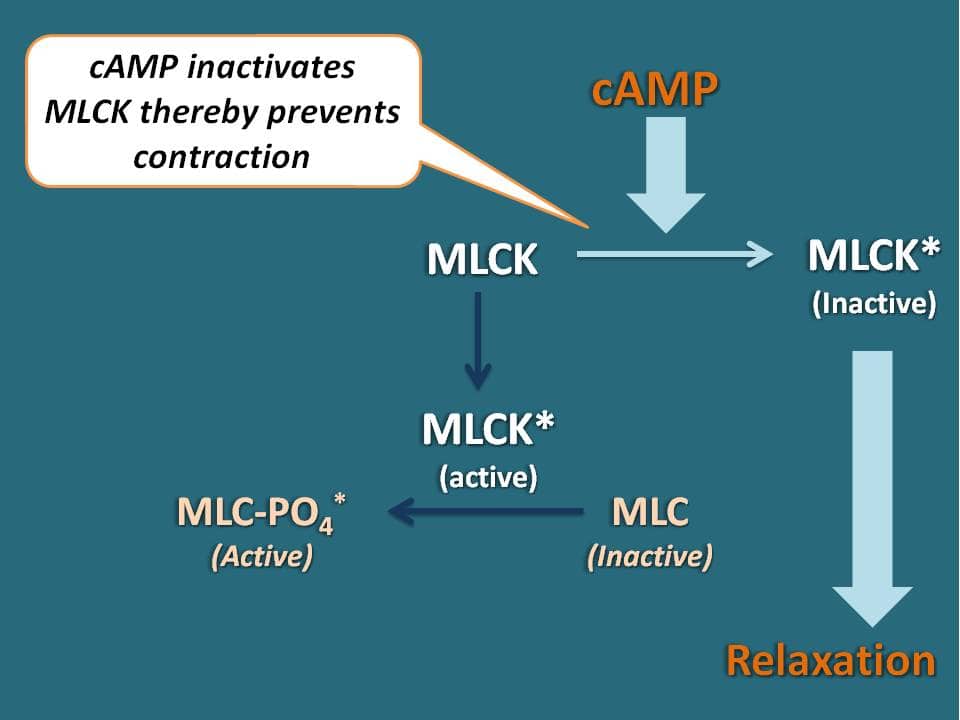
In this way, cAMP inhibits action of MLCK thereby inhibits contraction producing relaxation.
Why it is like that?
Why a single mediator is used for two opposite actions by adrenergic system? Let’s have an illustration here. Suppose a military group is participating in a war and it may have two types of members. One type is the soldiers whose task is to fight with any intruders and kill them. Second type is a doctor in the group who always save the life of any soldier. Both people have quite opposite actions but still both are required for a smooth functioning of military.
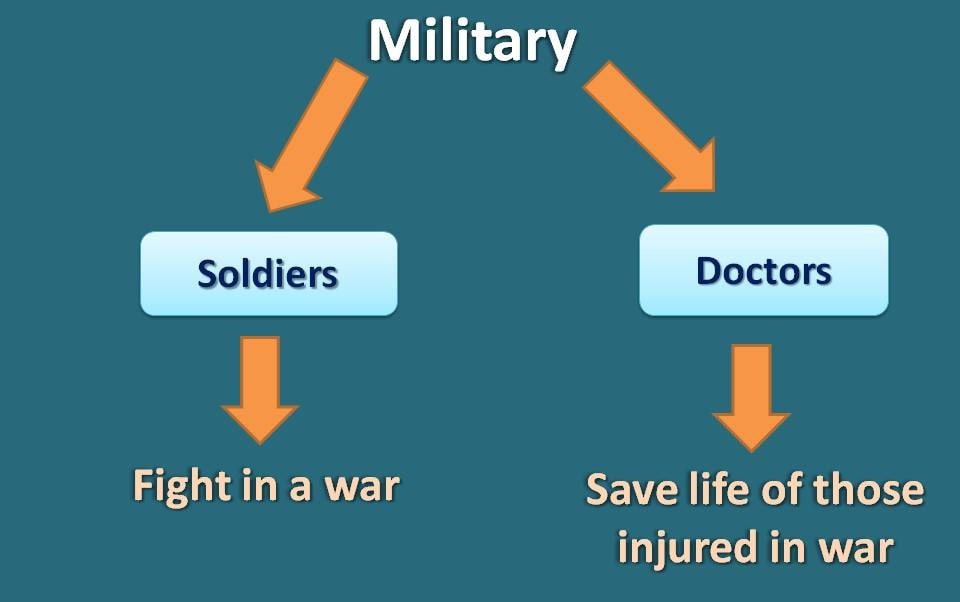
Similarly, adrenergic system increases cardiac contraction to increase the blood supply to the systemic organs. At the same time it increases the oxygen supply by dilatation of the bronchioles. Even these two are quite opposite actions one being contraction another being relaxation, still both are essential to increase the cellular activity under stressful conditions.
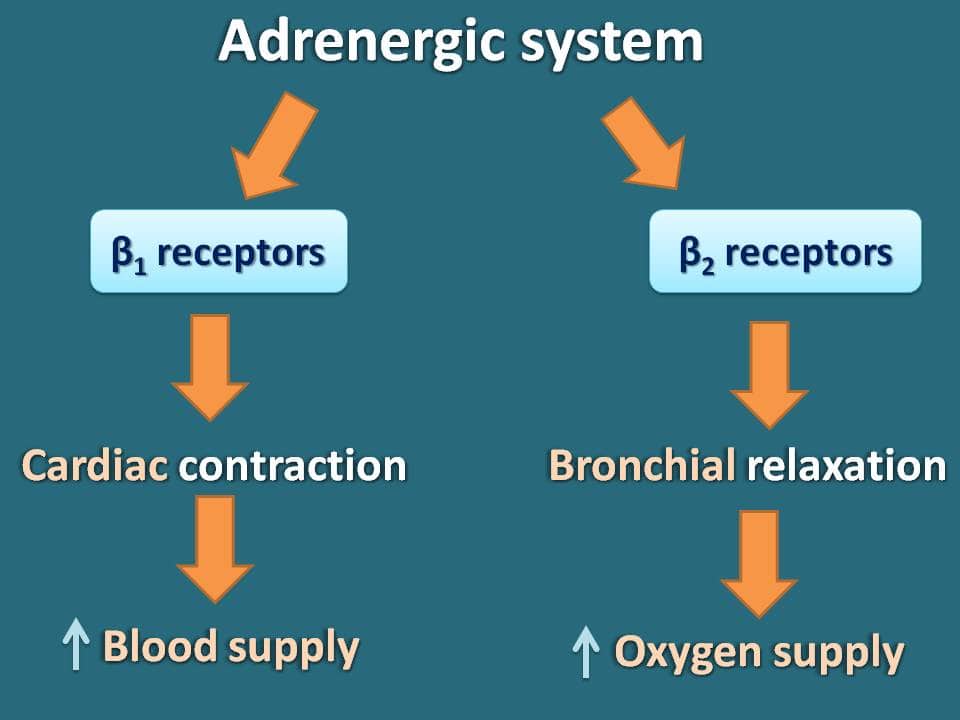
So, that’s the secret behind this tiny mediator cAMP with unequivocal set of its actions making this mediator so important to our physiological system.